Woodworking hammer is equipment that used to create sudden impact force to drive or remove nails, fits parts, forge metal and breaking up objects. Most of them are hand tools but few of them are power tools. It comes in different sizes, shape and types depends on their functions. Different trades have a special basic tool for different uses. Usually all the hammers contain two main parts – head and handle. The head is perpendicular to the axis of handle. There are so many types of hammer but here we only discuss the carpenter hammers that are used in different woodworking project.
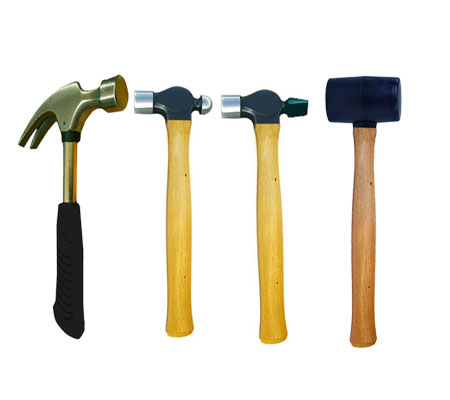
Claw Hammer
Claw Hammer is one of the basic tools for woodworking. It is used to drive the nail or pull the nails and some other works. It has two parts – head and handle. The head has two sides – one side is flat whereas other side has a ‘V’ shape with curved for removing nails from wood or other work piece. The head is made of steel and the handle is made of wood like hickory, fiberglass or steel. If the fiberglass or steel handle is used then it may use rubber or plastic or vinyl grip for control and comfort. The claw hammers are available in different sizes and weights such as 455-680gm. It is also known as carpenter hammer.
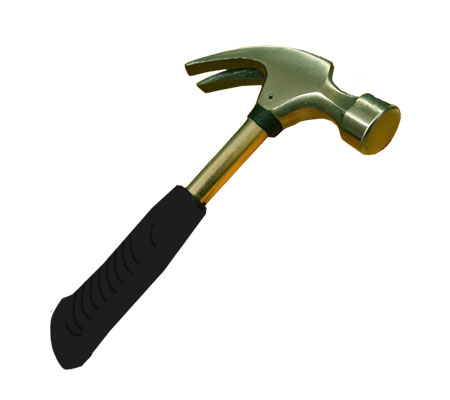
Framing Hammer
Farming hammer contains a longer handle and heavier than claw hammers. It is used to driving or removing large nails and doing carpentry work.
Ball peen hammer
Ball peen hammer contains one flat end and one round end on their head. Normally they are often used for hammering and shaping metal. They are also used to drive punches and cold chisels. The size and weight of them are as similar as claw hammers but their uses are not as versatile as the claw hammers. It is not essential for a woodworker. Generally the head is made of hard steel and the handle is made of wood or Hickory. They are also known as ball pien hammer, engineers or mechanics hammers. The common weights are from 110g to 165 gm but they can be range from 55 – 1100g.
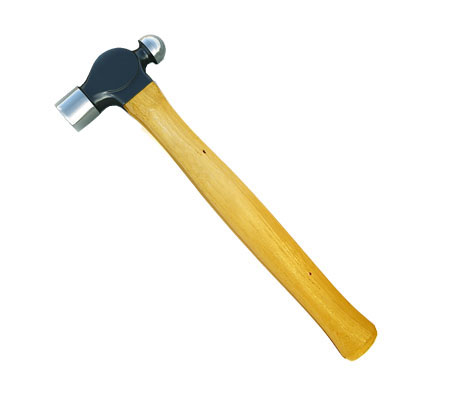
Cross pein hammer
This woodworking hammer has two sides in head where one of the sides is flat as like ball peen hammer but other side is different which looks tapered. They are used for driving small nails; straighten the deformed nails, shaping metal or light joinery work. They come in two different designs – English and France/German.
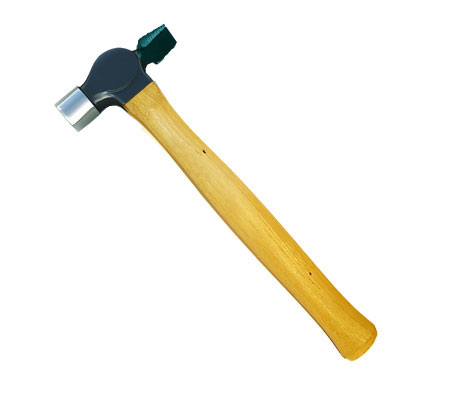
Mallet hammer
Mallets are used in woodworking project to reduce damage to whatever we are hitting. They are made of soft materials such as wood, plastic, rubber. They have a board face which can be removable or fixed. Both of them have advantage and disadvantages. The removable face is replaceable which make it cheaper. On the other hand fixed face mallets have bouncing problems. To solve this problem a newer version mallets are come in which is known as dead blow hammer. It has a hollow head filled with lead or steel shot to reduce bounce. They are used for beating joint together, driving chisels, forming sheet metal, working on soft metals, and knock in dowels but not suitable for driving nails. It is a fundamental tool for a joinery work.
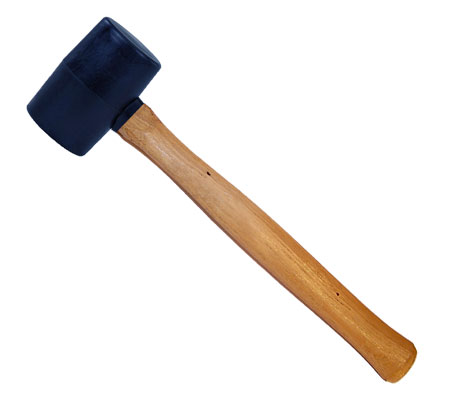
Soft faced hammer
The end faces of these woodworking hammers are made of soft materials like rubber, wood, plastic etc. It is the smaller version of the mallet hammer. It is used those cases where steel will possibly damage the work piece.
Lathe hammer
A lathe hammer head contains a smaller cutting blade and pulling nails in one end whereas the other end has a hammer head. It is used for cutting and nailing wood lath. It is also known as a lath hammer, lathing hammer, or lathing hatchet.
Knife edged hammer
This carpenter hammer looks like an axe because it has a knife edge in one end whereas the other end is flat surface. The carpenter use this woodworking hammer for cut or split wood.
Roofers and Slaters Hammer
This hammer has a spike at one side whereas the other end has a plane face. It is used for putting nail hole in slates and knocking the nails.
Non Woodworking hammer
Without these, there are many others hammers are available like Lump hammer or club hammer, Sledge hammers, Blacksmith hammer, Bricklayer hammer, Brass hammer, Cow hammer, Drilling hammer, Geologist’s hammer. But they are actually made for specific type of work which is given as follow:
| Hammers | Used for |
|---|---|
| Lump hammer or club hammer | hitting cold chisels to break masonry in building site |
| Sledge hammers | breaking up masonry, stones and concrete, knock rigid assemblies |
| Engineering / Drilling Hammer | locomotive and steam engine work |
| Blacksmith’s Hammer | shaping steel |
| Welder’s hammer | remove waste material from round a weld |
| Blocking Hammers | shaping metal on a block or anvil |
| Geologist Pick Hammers | breaking up rocks |
| Planishing Hammer | metal working |
| Scaling Hammers | removing scale in industries like boiler |
| Brick & Mortar Hammers | breaking bricks |
| Bricklayer’s / Tilesetter’s Hammer | cutting brick or tile |
| Drywall Hammers | cutting plasterboard for pipes |
| Chasing Hammer | designed and shape metal jewelry |
| Toolmaker’s Hammer | delicate work in the machine shop |
| Railroad-spike maul Hammer | driving a railroad spike |
| bushing hammer | allows stone and concrete to be textured |
| Scutch Hammer | construction industry |
Awareness using carpenter hammer
- Always use the exact hammer for the work to avoid possible damage to the work piece and makes the work easier.
- To get most benefits, grip at the end of the handle.
- Always avoid loose head, damage handle or chip face.
- To prevent probable damage of a work piece, use a piece of wood before hitting on a work piece.
- Do not use the side for hitting purpose; use the head of the hammer. It would possibly damage the hammer.
- Sometimes you have to rough the face with abrasive paper because after long time work the face can become polished.
Both the weight and handle type are the important factor for choosing a woodworking hammer. They have a relationship with comfort. The longer handle will help to get the full speed of the hammer but too long hand will delivers force to the wrong place. On the other hand a short handle will not deliver enough force.